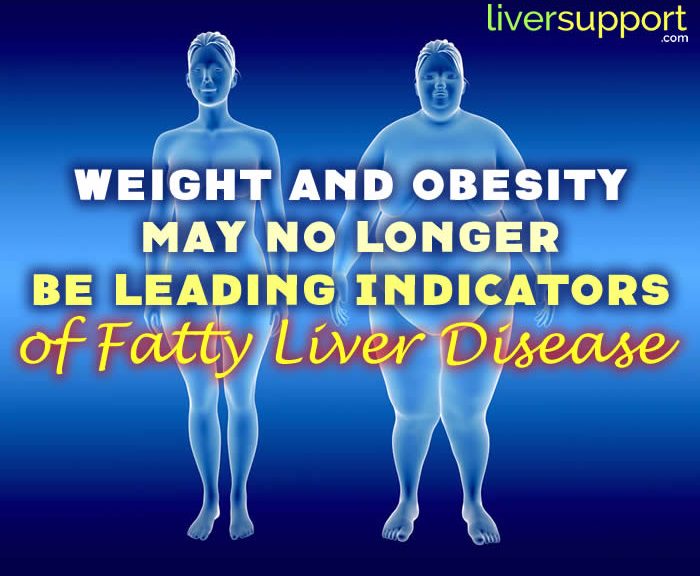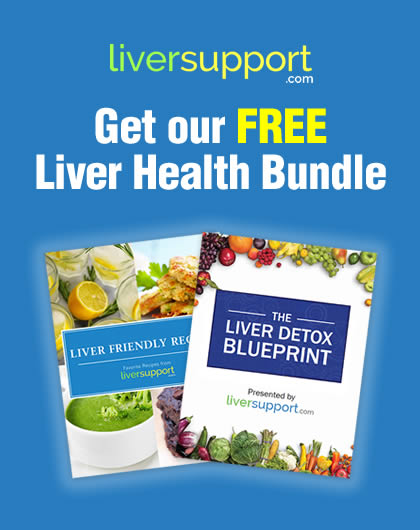
Previous
Can Sunlight Actually Impact Your Liver's Health?

Next
Liver Protection Is as Important as Protecting Your Heart: Here’s Why
Weight and Obesity May No Longer Be Leading Indicators of Fatty Liver Disease
New research from The Westmead Institute for Medical Research (WIMR) discusses why lean people are not exempt from developing fatty liver disease.
Based on new research out of The Westmead Institute for Medical Research (WIMR), fatty liver diseases commonly associated with obesity and weight may need to undergo a little rebranding. Scientists believe they observed the mechanism by which fatty liver disease can affect leaner individuals.
When it comes to weight, researchers at WIMR keyed in on metabolism and bile production as the reason for why lean people can experience fatty liver disease and often with more severe implications than those who are overweight. In their words, “lean patients had higher levels of bile acids, which play a role in the digestion of fats, and a protein called fibroblast growth factor 19 (FGF19). Bile acids and FGF19 increase energy expenditure, which can explain why lean individuals with fatty liver disease stay lean (1).”
As if fatty liver disease wasn’t already difficult to detect, now those who previously believed a leaner physique excluded them from liver disease may want to rethink their position and start taking some liver support supplements.
Diagnosing Fatty Liver Disease
In most cases, a true and thorough fatty liver disease diagnosis requires a series of blood tests and imaging procedures including ultrasounds, CT scans, and MRIs, and often comes too late or as a surprise result after screening for other unrelated ailments.
7 Early Symptoms
Liver disease symptoms are often difficult to detect or altogether dormant (3).
Early symptoms of fatty liver disease to look out for include:
- Low energy or fatigue
- Upper right abdominal pain or discomfort
- Abdominal swelling (ascites)
- Swollen blood vessels beneath the skin’s surface
- Enlarged spleen
- Red palms
- Jaundicing, or yellowing of the eyes or skin
What We Know About Fatty Liver Disease and the Future
This research is a significant advance in identifying and understanding the causes behind this extremely serious and prevalent disease. The research at WIMR advances our understanding of fatty liver disease and ultimately sets us down a path towards more targeted treatments.
Fatty liver disease, which includes Non-alcoholic Fatty Liver Disease NAFLD, and Nonalcoholic steatohepatitis (NASH), affects an estimated quarter of the world’s entire population (1).
In the U.S., an estimated 14-49% percent of people have some sort of fatty liver disease (2). Yes, that is a staggeringly wide margin, and the reason behind it hints at the insidious nature of fatty liver disease. Unfortunately, most people who have fatty liver disease don’t know it yet, as symptoms often don’t manifest until cirrhosis or scarring of the liver is present.
The research from WIMR and the collective commitment of other organizations around the world make the impending eradication of fatty liver disease a serious possibility. The World Health Organization (WHO) pledged to eradicate what they’ve labeled as “the silent killer” by 2030, and other major organizations and world governments such as Bangladesh, Nepal, and Thailand have all followed suit (5).
As we look forward with a broader understanding of how fatty liver disease manifests, we can see a possible finish line in knowing that a multitude of clinical trials are currently underway.
Treatments and Clinical Trials
Right now one of the only treatments for cirrhosis and fatty liver disease is a transplant, but that’s not always economically or physically feasible. No other FDA approved fatty liver medications exist. That’s why it’s always important to be thinking about your liver, with or without a diagnosis.
If you are past the diagnosis stage you’ll be more interested in the future of liver disease treatment and the clinical trials currently being conducted. One such promising clinical trial currently in phase 3 is called The REGENERATE study. Much like researchers at WIMR, it is setting its aim on the body’s bile production system as a way to prevent fatty liver disease (6).
A full list of upcoming and ongoing clinical trials can be found here.
Prevention and Reversal
In spite of all the clinical trials and progress, the treatment options for those who have fatty liver disease are still thin – and even thinner for those seeking natural treatments. However, fatty liver disease can be reversed if addressed early enough.
A few of the most proactive things we can do are to:
- eat right
- exercise
- and use liver support supplements to ensure healthy liver nutrition.
Diagnosed or not, getting ahead of liver disease is always preferred when trying to cut down liver fat.
Diet and exercise should be your first wave of prevention, eliminating foods high in saturated fats and cutting back on any alcohol. Along with processed sugars, these are the most difficult things for our liver to break down and are leading causes of liver damage and disease (3).
After diet and exercise, taking a regimen of natural supplements and vitamins to help bolster you liver is a smart idea. They will help balance a healthy diet, as season and crops change depending on your region.
Clinical LiverSupport
Did you know that 3 ingredients in Natural Wellness’s Clinical LiverSupport – green tea, artichoke and beet leaf – can help prevent a fatty liver and reverse steatosis? Yes, these 3 ingredients help prevent fat deposits in your liver.
Furthermore, milk thistle is a great example of a natural remedy packed with antioxidants that can help protect and detoxify your liver. Turmeric is another time-tested natural remedy.
Conclusion
As with any changes to your diet or routines, always consult your doctor and pay close attention to what your body is trying to tell you. While fatty liver disease can be life-threatening if left undiagnosed and treated, don’t let it live up to its name as a “silent killer.”
- Staff, S. X. (2019, August 26). Scientists closer to solving mystery of why lean people get fatty liver disease. Retrieved from https://medicalxpress.com/news/2019-08-scientists-closer-mystery-people-fatty.html Published Online by Medical Xpress
- (2019, August 22). Nonalcoholic fatty liver disease. Retrieved from https://www.mayoclinic.org/diseases-conditions/nonalcoholic-fatty-liver-disease/diagnosis-treatment/drc-20354573 Published Online by Mayoclinic.org
- Staff, U. C. L. A. (n.d.). Fatty Liver Disease. Retrieved from https://www.uclahealth.org/comet/fatty-liver-disease Published Online by UCLAHealth.org
- Bakibinga, P. (2019, August 19). The WHO wants to rid the world of hepatitis by 2030: why it's a tough ask. Retrieved from http://theconversation.com/the-who-wants-to-rid-the-world-of-hepatitis-by-2030-why-its-a-tough-ask-120854 Published Online by The World Health Organization
- Senior Correspondent, bdnews24.com. (2019, July 29). Bangladesh devising national strategy to eliminate hepatitis. Retrieved Online from https://bdnews24.com/health/2019/07/29/bangladesh-devising-national-strategy-to-eliminate-hepatitis
- Watch, Center. (2018, March). The REGENERATE Study (Research Study for Treatment of NASH (Non-Alcoholic Steato-Hepatitis)/Advanced Fatty-Liver Disease). Retrieved from https://www.centerwatch.com/clinical-trials/listings/148373/the-regenerate-study-research-study-for-treatment-of-nash-non-alcoholic-steato-hepatitisadvanced-fatty-liver-disease-2/?&radius=50&featured=true






